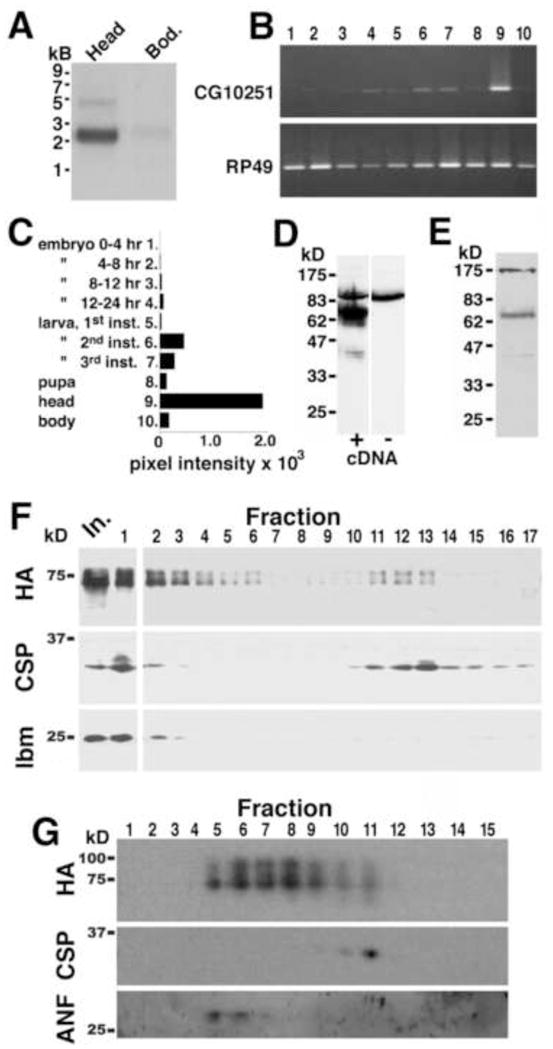Fig 1.

Expression of CG10251 mRNA, protein, and subcellular localization. A) Northern blots show expression of CG10251 mRNA in heads and, to a lesser extent, in bodies. B) PCR using a panel of cDNAs from various developmental stages (see labels in panel C) confirmed high expression of CG10251/prt in adult heads, relative to the body, as well as some expression in larva, and minimal expression during pupal and embryonic stages (B, top panel). Identical samples were amplified with a probe to the widely expressed gene RP49 (B, bottom panel). Normalized levels of CG10251 expression are shown graphically in C. D, E: Expression of the CG10251 protein. D) Homogenates from wild-type S2 cells (−) and cells expressing the CG10251/prt cDNA (+) were probed on Western blots using the CG10251 antiserum. We detected a band at ~70 kD in cells expressing CG10251 but not wild-type cells. E) Homogenates from wild-type adult heads showed a similarly migrating band at ~70 kD. F, G: CG10251/PRT protein localizes to both SV and dense fractions. F) Homogenates from flies expressing an HA-tagged version of PRT were fractionated on a linear glycerol velocity gradient followed by Western blotting with primary antibodies to HA (top panel), cysteine string protein (CSP, a marker for SVs, middle panel), and late bloomer (lbm, a marker for the plasma membrane, bottom panel). For all three antibodies, the input lane (In.) and cushion (fraction 1) were processed separately to prevent over-exposure, allowing better visualization of the relevant bands. G) Homogenates from flies expressing an HA-tagged version of PRT were fractionated on a linear sucrose density gradient followed by Western blotting with primary antibodies to HA (top panel), CSP (middle panel), and the fusion protein containing Atrial Natriuretic Factor (ANF) and GFP (bottom panel, a marker for LDCVs). Molecular weight markers (kD) are shown on the left side of the figure.
